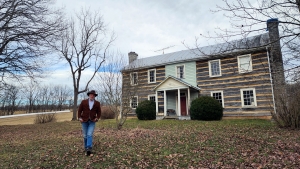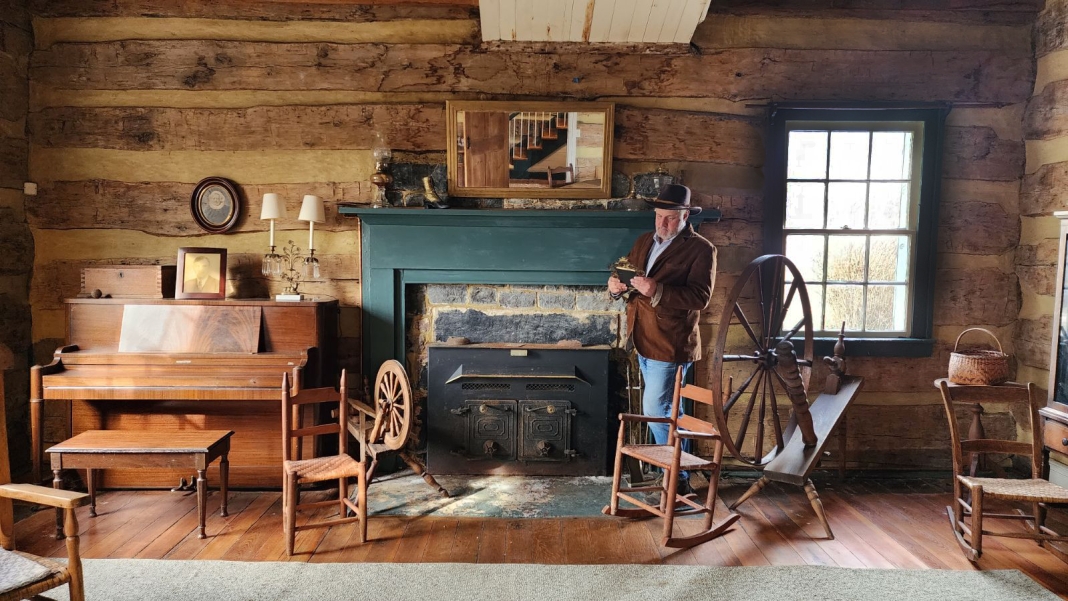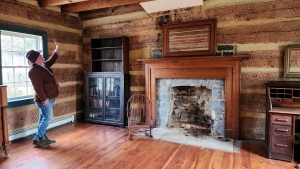LEWISBURG, W.Va. — Once counted among the most gracious homes in the Greenbrier Valley, the historic Level Tavern on scenic US-219 is being rediscovered, thanks to its recent introduction to the real estate market.
Built in 1830, the hewn-timber residence, renowned for its vast rooms, hosted travelers unnumbered but faded into obscurity after the old wagon road in front changed course.
Now, the well-preserved tavern at Organ Cave is on the market for $750,000, and historian and real estate agent David Sibray says he's discovered there's more to the property than he'd guessed.
"One thing I've noted is that the house remarkably seemed to disappear from local memory," he said. "It was once the talk of the valley, but people had, until recently, forgotten it."
Built by settler William Level, it fronted the old Salt Sulphur Springs Turnpike, a gravel road that's now a scenic highway. The road's course shifted away from the tavern in the early 1900s, and the house grew less visible, which may account for its drop in notoriety.

"You can still see it through the trees, but it's now more private than it once had been, which I think adds to its romantic character," Sibray said.
The tavern, which has been exclusively a residence since the late 1800s and has remained in the Level family, was noted particularly for its hewn-timber construction, rare for a house of its size.
It was described in the 1917 History of Greenbrier County as “a veritable mansion in its day, and as to things substantial and comfortable is not second to some others more palatial of these latter times.”
Randy S. Burdette, a historian and agent for the home along with Sibray, said the tavern is also notable for its remarkable ceiling height and the size of its main rooms.
"These are the highest ceilings I've ever seen in a timber home of the period," Burdette said, noting that the heights in the most significant rooms measured 10 feet on the first floor and eight feet on the second.
"Most timber-built homes had somewhat low ceilings and weren't always as bright and airy as in this large house."
Sibray said that since listing the property, several local historians have expressed surprise that the house existed, and several podcasts and news programs are arranging visits to the property.
Foxfire Realty is sponsoring an open house for historians at the Level Tavern in the spring. For more information on the property as real estate, visit Historic Level Tavern on 42-acre Farm.
Sign up to receive a FREE copy of West Virginia Explorer Magazine in your email twice weekly. Sign me up!



